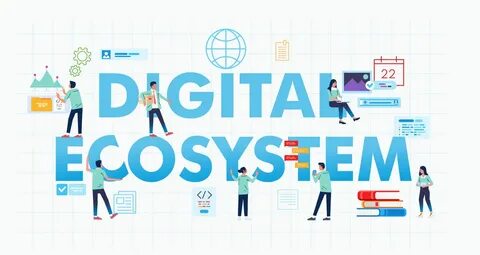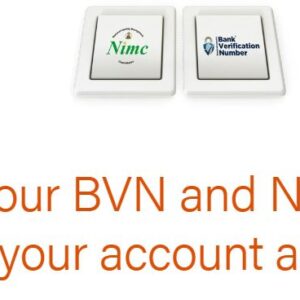
Outline:
1: Understanding Digital Banking Ecosystems
-
- What Are Digital Banking Ecosystems?
- How They Differ From Traditional Banking Models
- Why the Ecosystem Model Is the Future of Finance
2: The Evolution of Algorithmic Budgeting
-
- What Is Algorithmic Budgeting?
- From Spreadsheets to Smart Systems
- Real-Time Adjustments and Behavioral Nudges
3: How Digital Banking Ecosystems Are Solving Debt Challenges
-
- Predicting Overspending Before It Happens
- Encouraging Debt Discipline Through Data
- Custom Repayment Plans Based on Cash Flow
4: Financial Autonomy in a Predictive World
-
- Why Control Over Money Is Now a Click Away
- Goal-Based AI and Smart Recommendations
- Automating Savings, Investments, and Debt Reduction
5: Components of a High-Performing Digital Banking Ecosystem
-
- APIs and Open Banking Integration
- Financial Analytics Dashboards
- H3: AI-Powered Budgeting Engines
- H3: Cross-Platform Compatibility
6: Algorithmic Budgeting for Different Lifestyles
-
- Freelancers and Gig Workers
- Salary Earners
- College Students and Young Adults
7: Popular Apps Leading the Algorithmic Budgeting Movement
-
- YNAB (You Need A Budget)
- Mint and Intuit Solutions
- Cleo, Emma, and PocketGuard
- Real-World User Testimonials
8: The Role of Digital Banking Ecosystems in Reducing Financial Anxiety
-
- From Confusion to Clarity: How AI Provides Peace of Mind
- Alerts That Make You Think Twice
- Personalized Reports That Track Financial Growth
9: How Predictive Finance Improves Credit Health
-
- Forecasting Credit Score Movements
- Avoiding Late Payments Through Automation
- Managing Debt Utilization Ratios
10: Real-Life Case Studies
-
- Lisa’s Journey from Debt Spiral to Stability
- How a Digital Banking Ecosystem Helped James Save $10,000 in One Year
11: Limitations and Challenges
-
- Overreliance on Automation
- Privacy and Security Concerns
- Learning Curve and App Fatigue
12: How Banks and FinTechs Are Collaborating for Predictive Finance
-
- The Rise of Embedded Finance
- Partnerships That Make Smart Banking Easier
13: Embracing Digital Banking Ecosystems: Step-by-Step Guide
-
- Setting Up Your Ecosystem
- Choosing the Right Budgeting App
- Connecting and Syncing All Your Accounts
14: The Future of Finance: What to Expect Next
-
- Blockchain and Digital Identity Integration
- Hyper-Personalized Financial Advice
15: Final Thoughts: The Power of Digital Banking Ecosystems in Your Hands
16: FAQs
-
- What is a digital banking ecosystem?
- How does algorithmic budgeting differ from traditional budgeting?
- Are these budgeting tools safe for my financial data?
- Can these tools help if I’m already in debt?
- What’s the best app for algorithmic budgeting?
Revolutionizing Digital Banking Ecosystems and Algorithmic Budgeting: Transforming Debt Behavior and Financial Autonomy – A Game-Changer or Hidden Trap in the Age of Predictive Finance?
Understanding Digital Banking Ecosystems
What Are Digital Banking Ecosystems?
Digital Banking Ecosystems are intelligent networks of financial tools that work together to help individuals manage money more efficiently. At their core, they merge banking, budgeting, saving, investing, and credit-building features into a single, seamless experience.
From your phone, you can access everything—from seeing your balance to auto-splitting rent with roommates to scheduling loan repayments. This interconnection creates a financial environment that’s intuitive, responsive, and smart.
How They Differ From Traditional Banking Models
Traditional banks offer fragmented experiences. You check your balance in one app, use another for budgeting, and a third for investments. Ecosystems unify all this under one roof, offering real-time insights and AI-backed decisions that align with your personal financial goals.
Why the Ecosystem Model Is the Future of Finance
Let’s face it—our finances are digital now. Salaries are direct-deposited, bills auto-debited, and purchases are a tap away. The old system can’t keep up. Digital ecosystems bring everything together, evolving your money management from stressful to seamless.
The Evolution of Algorithmic Budgeting
What Is Algorithmic Budgeting?
Algorithmic budgeting uses machine learning and behavioral algorithms to manage your budget for you. Instead of static spreadsheets, you get a living, breathing budget that changes based on your habits.
From Spreadsheets to Smart Systems
Apps like YNAB, Mint, and Cleo analyze your spending patterns and recommend budgets that adapt over time. No more guesswork. If you’re overspending on dining out, your app flags it. If you’re falling behind on loan repayments, it nudges you.
Real-Time Adjustments and Behavioral Nudges
Say goodbye to end-of-month shock. With real-time updates, you always know where your money is going. Behavioral nudges like “You’ve spent $50 on snacks this week—want to set a limit?” help guide better choices.
How Digital Banking Ecosystems Are Solving Debt Challenges
Predicting Overspending Before It Happens
Apps can now predict based on your payday, habits, and bills when you’re likely to go into the red. They’ll prompt you to adjust before the damage is done.
Encouraging Debt Discipline Through Data
Visual trackers show how your debt decreases over time. You get dopamine hits for staying on track, just like in a game.
Custom Repayment Plans Based on Cash Flow
Instead of one-size-fits-all payment plans, your ecosystem customizes how much you pay based on income, side hustle payments, and unexpected bills.
Financial Autonomy in a Predictive World
Why Control Over Money Is Now a Click Away
In the past, people had to rely on financial advisors or complex spreadsheets. Now? A few taps on your phone and you’re in full control.
Goal-Based AI and Smart Recommendations
Want to buy a car in 6 months? The app will back-calculate how much to save weekly. Want to clear a credit card? It’ll schedule micro-payments optimized for interest savings.
Automating Savings, Investments, and Debt Reduction
Round-up features and savings triggers make automation painless. Spend $4.50? The app rounds to $5 and sends $0.50 to savings or debt.
Components of a High-Performing Digital Banking Ecosystem
APIs and Open Banking Integration
APIs connect banks, apps, and services securely. That’s what lets your budgeting app “talk” to your bank and analyze real-time transactions.
Financial Analytics Dashboards
See income, expenses, savings, investments, and debts in one customizable view. No manual entries needed.
AI-Powered Budgeting Engines
These engines learn over time, refining your financial plan based on actual behavior.
Cross-Platform Compatibility
Use your ecosystem across devices—phone, tablet, desktop—without losing functionality.
Algorithmic Budgeting for Different Lifestyles
Freelancers and Gig Workers
Irregular income? Budgeting apps now forecast low-income months and prompt saving during high-earning ones.
Salary Earners
AI adjusts monthly budgets based on predictable income and detects lifestyle inflation.
College Students and Young Adults
Beginner-friendly apps like Cleo and Emma make finance fun with memes, challenges, and reward systems.
Popular Apps Leading the Algorithmic Budgeting Movement
YNAB (You Need A Budget)
Focused on giving every dollar a job, it teaches disciplined, goal-oriented spending.
Mint and Intuit Solutions
Offers real-time transaction tracking, categorization, and credit score monitoring.
Cleo, Emma, and PocketGuard
These are fun, Gen Z-friendly apps that combine smart insights with chatbot features.
Real-World User Testimonials
- “I saved $1,200 in 3 months using YNAB.”
- “Cleo’s weekly roast keeps me from overspending. I love it!”
The Role of Digital Banking Ecosystems in Reducing Financial Anxiety
From Confusion to Clarity: How AI Provides Peace of Mind
Instead of waking up to financial chaos, users wake up to neatly organized dashboards with actionable insights.
Alerts That Make You Think Twice
Before you make that $300 impulse purchase, Cleo or Emma might message: “Are you sure? Rent’s due in 5 days.”
Personalized Reports That Track Financial Growth
Weekly or monthly reports show progress: debt reduction, increased savings, or improved spending habits.
How Predictive Finance Improves Credit Health
Forecasting Credit Score Movements
Apps like Credit Sesame and NerdWallet simulate how your actions affect your score.
Avoiding Late Payments Through Automation
Set and forget. Your ecosystem handles due dates, avoiding penalties and dings to your score.
Managing Debt Utilization Ratios
Apps alert you when you’re approaching your credit limit and suggest actions to reduce utilization.
Real-Life Case Studies
Lisa’s Journey from Debt Spiral to Stability
With $12,000 in credit card debt, Lisa turned to Mint and Chime. She automated her savings, reduced spending by 18%, and cleared half her debt in 9 months.
How a Digital Banking Ecosystem Helped James Save $10,000 in One Year
James used YNAB for budgeting, Robinhood for investing, and Credit Karma for score tracking. With this combo, he increased his net worth by over $10K in 12 months.
Limitations and Challenges of Digital Banking Ecosystems and Algorithmic Budgeting
While digital banking ecosystems and algorithmic budgeting are revolutionizing how we manage money, they are far from perfect. Like any technology-driven transformation, they come with a fair share of growing pains, risks, and limitations that users and developers must acknowledge.
Let’s break down the biggest obstacles and what they mean for your financial autonomy.
1. Overreliance on Automation
One of the core benefits of algorithmic budgeting is that it takes the heavy lifting off your plate. But this convenience can lead to a dangerous overdependence on technology.
When users stop engaging with their finances and let AI do all the thinking, they may:
- Fail to catch budgeting errors
- Miss financial learning opportunities
- Make blind spending or investment decisions based on incomplete data
Real-world example: If your budgeting app wrongly categorizes a recurring business expense as personal entertainment, your future financial predictions and tax reports might be skewed. You could end up under-saving, overpaying taxes, or making poor credit decisions.
Solution: Use these tools as assistants, not replacements. Always double-check key data and understand the rationale behind AI recommendations.
2. Privacy and Data Security Concerns
Digital banking relies heavily on sensitive personal data—income, spending habits, investment history, debt levels, even biometric login credentials. With this much data in one place, users face increasing risks related to:
- Data breaches
- Unauthorized access
- Surveillance capitalism (selling behavioral data to third parties)
Stat to note: According to the Identity Theft Resource Center financial services accounted for over 27% of all data breaches in 2023, making it the most targeted industry globally.
Many free budgeting apps are funded through partnerships, and in some cases, your anonymized data could be shared with third parties. Always read the privacy policy, especially when using open banking APIs and third-party integrations.
Best practices:
- Choose apps that use bank-level encryption (AES-256)
- Look for GDPR or CCPA compliance badges
- Opt for tools that let you delete your data anytime
3. Algorithmic Bias and Errors
AI is only as smart as the data it learns from. Unfortunately, if the algorithm is trained on biased, incomplete, or outdated data, the decisions it makes can be:
- Inaccurate
- Misleading
- Harmful to certain groups (e.g., lower-income or gig workers)
For instance, your app might suggest you can afford higher monthly savings based on one unusually high freelance payment, not realizing it’s a one-time gig.
Or worse, it might recommend a high-risk loan product without fully assessing your financial volatility.
Even tech giants like Google and Amazon have come under fire for algorithmic bias. The same risk exists in financial AI tools.
Further reading: For an academic exploration of algorithmic risk and financial data ethics, visit this detailed research overview by Brookings Institution
4. App Fatigue and Fragmentation
With so many tools available—YNAB, Mint, Cleo, PocketGuard, Chime, Monzo, etc.—users often face:
- Decision fatigue
- Notification overload
- Confusing overlapping features
Some users bounce between apps, trying to find the “perfect one,” only to abandon them all due to complexity or fatigue. Fragmentation also increases the chance of data inconsistency and duplicate budgeting plans.
Pro tip: Pick 1–2 apps that integrate well (e.g., Cleo + Monzo, or YNAB + Plaid) and stick with them long enough to benefit from long-term data learning.
5. Limited Offline Access and Connectivity Barriers
Most digital banking ecosystems require stable internet access. In areas with weak connectivity or among populations without reliable smartphones, adoption remains low.
This can widen the digital divide, leaving out:
- Rural communities
- Older adults
- Economically disadvantaged groups
Without access to predictive tools, these groups may continue to struggle with traditional debt patterns and financial illiteracy.
6. Regulatory Uncertainty and Compliance Risks
As fintech grows faster than laws can catch up, many platforms operate in legal gray zones. This creates risks for both users and developers:
- Lack of consistent regulation across borders
- Difficulty in holding apps accountable for data misuse
- Ambiguous consumer protection laws
For example, a budgeting app licensed in Europe under GDPR may not offer the same data rights to users in Africa, Asia, or the U.S.
Regulatory frameworks like the Digital Operational Resilience Act (DORA) in the EU and U.S. FinTech oversight proposals aim to close these gaps—but it will take time.
While digital banking ecosystems and algorithmic budgeting are shaping a better financial future, they are not infallible. Awareness of these limitations ensures you stay informed, protected, and empowered. Technology can do a lot—but the smartest decisions still need a human touch.
How Banks and FinTechs Are Collaborating for Predictive Finance
The lines between traditional banking and fintech are blurring faster than ever—and for a good reason. Banks are waking up to the power of data-driven, predictive finance, while fintech companies are realizing the value of legacy banks’ infrastructure, trust, and customer base. This collaboration is giving birth to an entirely new financial experience that’s smarter, faster, and incredibly personalized.
The Rise of Embedded Finance
One of the most exciting trends in the digital banking ecosystem is embedded finance—where banking services are integrated into non-financial platforms. This allows consumers to access lending, saving, or insurance directly within their favorite apps or websites.
For example:
- Shopify offers merchant loans through partnerships with fintech lenders.
- Uber drivers can access instant payouts thanks to embedded banking features.
- Ride-hailing, e-commerce, and gig platforms now integrate payment and budgeting tools right into their apps.
This collaboration creates seamless financial experiences without users needing to switch apps or log into a separate bank portal.
Open Banking APIs as the Bridge
The Open Banking revolution has enabled fintechs to securely access bank data via APIs (Application Programming Interfaces). This allows users to connect all their financial accounts in one place, enabling predictive finance to work its magic.
Banks like Wells Fargo, Chase, and Barclays now offer APIs that fintech apps use to:
- Analyze spending behaviors
- Track loan repayment progress
- Forecast upcoming bills and cash flow issues
- A great example is Plaid, a fintech that connects consumer bank accounts to over 11,000 financial institutions and budgeting apps. Plaid acts as the trusted bridge between your bank and apps like Venmo, Robinhood, Acorns, and Cleo, making real-time predictive finance possible.
Real-World Collaborations
Here are a few noteworthy partnerships:
- Apple + Goldman Sachs: The Apple Card isn’t just a shiny titanium credit card—it’s a powerful budgeting tool backed by Goldman Sachs. It offers AI-powered expense categorization, interest forecasts, and repayment nudges built into the Wallet app.
- Chime + The Bancorp Bank: Chime markets itself as a neobank, but it leverages the banking license and infrastructure of The Bancorp Bank. Together, they provide features like early direct deposit and fee-free overdrafts, with Chime layering on top predictive alerts and AI-based budgeting tools.
- SoFi + Galileo Financial Technologies: SoFi’s acquisition of Galileo, a leading fintech API provider, supercharged its ability to offer personalized lending, investment, and financial wellness solutions across the ecosystem.
- BBVA + Simple: One of the earliest examples of bank-fintech fusion was BBVA acquiring Simple, which offered an AI-powered budgeting platform long before it was mainstream. Although Simple shut down, it paved the way for similar bank-fintech mergers globally.
Why This Collaboration Works
- Fintech brings the innovation, user experience, and agility.
- Banks bring the licenses, compliance frameworks, and customer trust.
Together, they build intelligent financial ecosystems where:
- Debt repayments are optimized automatically.
- Users receive smart nudges when they overspend.
- Investment allocations are adjusted based on real-time behavior and market shifts.
A Glimpse Into the Future
Expect to see even deeper collaborations between fintechs and banks in the coming years. Think:
- AI-powered financial advisors built directly into your banking app.
- Voice-activated financial summaries via smart speakers.
- Predictive risk scoring for loans, updated daily instead of monthly.
If you want to explore how these integrations are reshaping finance, Plaid’s developer portal offers a great look under the hood of this collaboration:
🔗 Explore Open Banking API Integrations at Plaid
Embracing Digital Banking Ecosystems: Step-by-Step Guide
Setting Up Your Ecosystem
Start with one budgeting app, like Cleo or Mint.
Choosing the Right Budgeting App
Pick based on features: automation, customization, reporting, or credit tracking.
Connecting and Syncing All Your Accounts
Use Plaid or secure integrations to connect checking, credit, loans, and investment accounts.
The Future of Finance: What to Expect Next
Blockchain and Digital Identity Integration
Secure, borderless finance with identity protection.
Hyper-Personalized Financial Advice
AI will soon act like human advisors—suggesting investments, taxes, and even retirement plans tailored to your behavior.
READ MORE: Uncover the Shocking Crisis of Student Loan and Medical Debts: How It Devastates Generational Wealth and Threatens Future Financial Stability
Final Thoughts: The Power of Digital Banking Ecosystems in Your Hands
Digital Banking Ecosystems and algorithmic budgeting are no longer futuristic trends—they are the tools of now. Whether you’re digging out of debt, saving for a home, or just trying to spend smarter, the digital age has gifted us predictive finance on demand. You’ve got the power. It’s time to use it.
FAQs
1. What is a digital banking ecosystem?
A digital banking ecosystem is a network of connected financial tools and platforms that let users manage everything from budgeting to saving and investing in one seamless interface.
2. How does algorithmic budgeting differ from traditional budgeting?
It uses AI to analyze behavior and adjust your budget automatically, unlike traditional methods which are static and manual.
3. Are these budgeting tools safe for my financial data?
Most top-rated apps use strong encryption, are regulated, and are compliant with data privacy laws like GDPR or CCPA.
4. Can these tools help if I’m already in debt?
Absolutely. They help by tracking your expenses, planning repayments, and automating savings to get you out of the red faster.
5. What’s the best app for algorithmic budgeting?
YNAB, Mint, and Cleo are among the best—choose based on your personality and goals.








